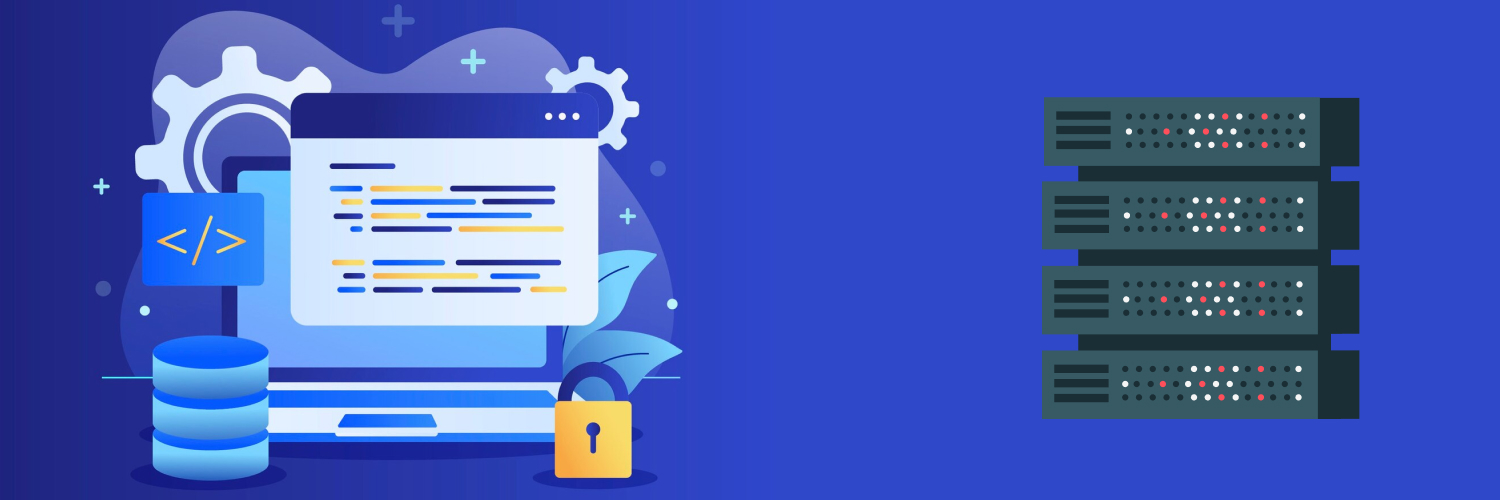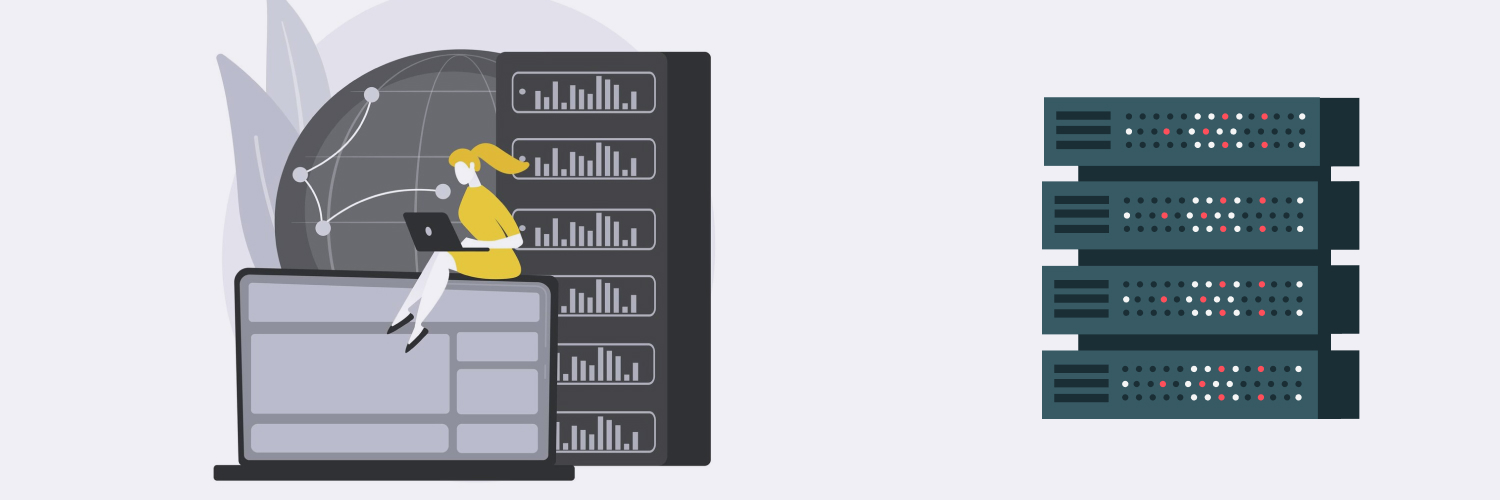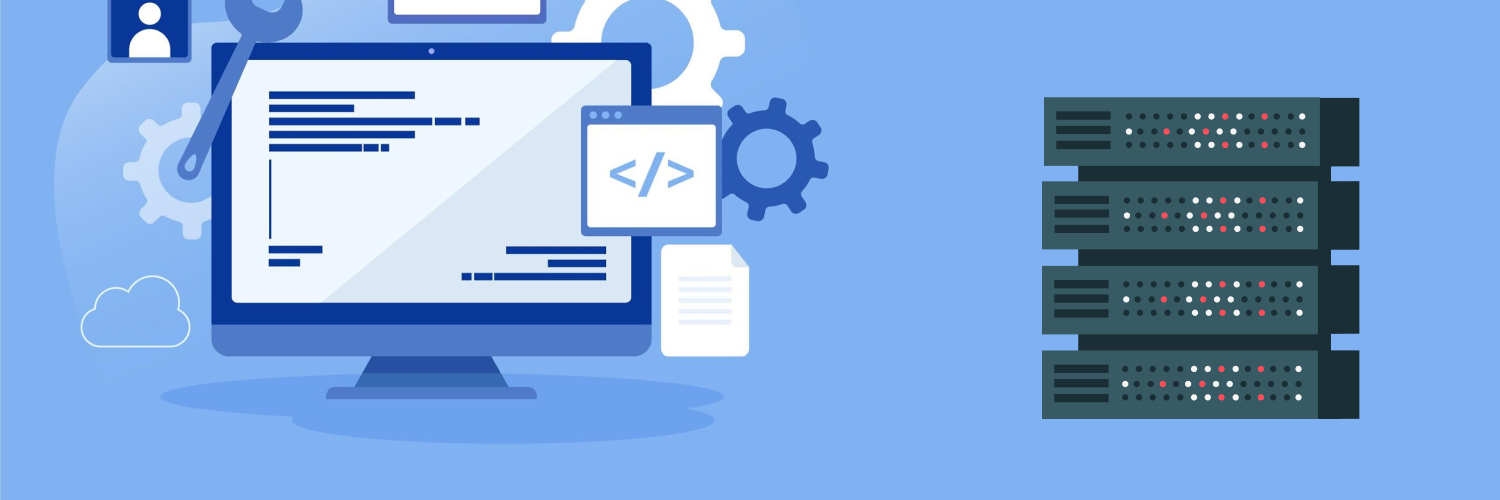Data Wrangling 101: How Clean Data Helps Businesses Find Success
As organizations expand their use of data, it’s more important than ever to organize information for proper analysis. Everyone, from executives to employees, relies on information to help them make informed business decisions. One bad data set can have long-lasting negative impacts on a company. A growing dependency on data and the need for accurate information make data wrangling more critical than ever.
The meaning of data wrangling can get complicated for beginners, so you’ll benefit from a review of the steps involved and best practices for implementation. In the end, you’ll better understand what data wrangling means and how it can strengthen your company.
What Is Data Wrangling?

Raw data refers to information not yet processed or stored within a system. Information typically comes in formats like images, text, and database records. Data wrangling covers the process of cleaning, organizing, and enriching this raw information. After massaging data into the proper format, businesses can leverage it when making decisions that affect a company’s future.
Organizations need data wrangling to gain value from the data they capture. It’s the only way to make information gathered by data scraping usable. Imagine you bring in a bunch of product information from another company’s website. It’s likely to contain a lot of unnecessary characters, images, and other info that isn’t relevant to your business.
Effective data wrangling means gathering raw information and giving it a business context. That way, your data’s ready for interpretation, cleaning, and transformation. You can leverage data wrangling software to remove any disconnected information and map it in a way that makes sense to your company.
Data cleaning vs. data wrangling
It’s easy for people to mix up the terms data wrangling and data cleaning. Data wrangling, meaning all the steps involved in making data usable, covers a broader range of tasks. Data cleaning is one of the phases covered during data wrangling. Many people are also confused by data munging vs. wrangling. Data munging is another term for data cleaning, which will be covered later.
What’s Data Wrangling in Business?

To understand why data wrangling, meaning getting information into a format ready for analysis, is essential, let’s look at this analogy. Let’s say a city needs to build a new hospital. The construction process doesn’t start by haphazardly throwing materials together. Engineers take the time to map out what’s needed and create a solid foundation to build additional structures.
That same philosophy applies to data wrangling, meaning you’re constructing a base for future use. After building the infrastructure and code needed for every process, it’s ready to provide immediate results. Any skipped steps can result in errors, missed opportunities, and bad modeling.
Enhances data quality
The data wrangling process, meaning everything from the software used to the people involved, addresses any outstanding concerns regarding raw data. That removes the possibility of incomplete or inaccurate information negatively impacting business operations.
With unstructured data becoming more common, it’s more important than ever that companies use data wrangling to speed up analysis and obtain valuable insights. Organizations get more consistency with data wrangling, meaning eliminating human errors makes information more uniform.
Drives data-driven decisions
In today’s business world, managers and executives are often called upon to make decisions quickly. That’s made easier with data wrangling, meaning that decision-makers have the information they need at their fingertips.
This information is then readily available to data analysts and scientists tasked with exploring the information and setting up models. The data is used in various operational processes to create reports, dashboards, and other visual aids that play a role in overall decision-making.
Improves operational efficiency
The techniques used for data wrangling, meaning the tools and processes used for data preparation tasks, help reduce manual effort, which saves time and resources. Speeding up the data process allows companies to make quicker decisions and enable more agile business processes.
Data wrangling handles the process of integrating information from multiple sources into a single data set. That gives company users a complete view of all business operations and makes for better analysis and valuable insights.
Helps companies gain a competitive marketing edge
Marketers benefit significantly from data wrangling, meaning it helps them set up more effective marketing campaigns and strategies. It’s easier for them to extract meaningful information from different data sources like social media platforms, website analytics, and customer databases.
Data wrangling processes also help marketers create customer base segments based on specific behaviors, attributes, and demographics. Segmentation allows marketers to create tailored marketing messages for different customer groups, leading to more personalized and targeted campaigns.
Understanding the Data Wrangling Process

Every data project requires a unique approach to ensure the final information produced is accessible and reliable. Even so, there are common steps involved in data wrangling, meaning you will follow a similar setup to get things up and running.
Data collection
The first data wrangling step involves pulling raw data from different sources to prepare information. This phase sets the tone for every subsequent data-wrangling process.
- Identify data sources
Start by determining what you need for data wrangling, meaning you must decide which sources to use. That can include:
- APIs
- Databases
- Cloud Services
- IoT Devices
- Social Media Platforms
- Customer Surveys
- Acquire data
Next, you need to extract data from all identified sources. The methods used can vary in data wrangling, meaning you may have to download files, rely on an API to gather web data, or use web scraping to collect information from a competitor’s website.
- Determine the correct format
The next step involves determining what format to use for the data. Standard formats used in data wrangling can include:
- CSV
- Excel
- XML
- JSON
A project may require storing data in a SQL or NoSQL database. Below are examples of different data formats in data wrangling, meaning you need to understand what it is you want to do with data once it’s collected:
- Structured: Data in a tabular structure with rows, columns, and clearly defined data attributes.
- Unstructured: Data not managed by a transactional system like a relational database. Examples include document collections, IoT information, and rich media.
- Validate information
It’s important to perform validation checks during data wrangling, meaning you confirm the data is complete, consistent, and accurate. After that, you’ll store the data in a secure location.
Data cleaning
Data cleaning is the next step in data wrangling, meaning the focus shifts to locating and correcting errors and inaccuracies in raw data. Issues looked for include:
- Missing values
- Duplicate entries
- Outliers
- Inconsistent formatting
If missing values are found during data wrangling, meaning there’s no recorded information, it gets filled in using statistical methods and domain knowledge. If neither of those works, then the affected rows or columns are removed.
Other examples of data cleaning include:
- Converting dates to a standardized format
- Making sure numerical units are consistent
- Normalizing categorical data
- Making sure ages and birth dates align
- Ensuring that product prices and quantities match
- Fixing incorrect measurements
- Correcting wrong data entries
Fixing issues often involves cross-referencing the information against external sources or tapping into domain knowledge. Data from different places are updated to a standardized format to ensure universal comparability and unity.
Documenting every data cleaning step is essential in data wrangling, meaning all changes are tracked, and the reason for any modification is recorded. Creating and maintaining an audit trail for transparency and ensuring users can reproduce the process in the future is also essential.
Data transformation
The data transformation process makes information usable in data wrangling, meaning it gets converted to a structured and consistent format. Once that happens, information is ready for analysts, data professionals, and other business users.
- Encoding
First, all categorical variables get changed into numerical representations to prepare them for analysis. Standard techniques used include:
- One-hot encoding: Typically used for variables with no numerical order or rank. It creates binary columns for every category. One represents that a class exists, while a zero represents that one does not.
- Label encoding: This technique involves converting categorical values by assigning a unique integer label to every category in the original variable. Labels are usually assigned in ascending order based on when they appear in data.
- Binary encoding: This methodology involves converting categorical variables to binary representation in data wrangling, meaning a hybrid approach combines label and one-hot encoding. After identifying variables and assigning labels, the integer labels are converted to binary representation, generating binary digits that form a set of columns.
- Normalization and scaling
After encoding, numerical information may need to be normalized or scaled to bring every value into a similar range. That way, variables using different units or scales do not overwhelm the analysis and modeling process.
- Aggregation
Here, multiple data points are combined into summary statistics. Examples include averages, sums, and counts. That simplifies data wrangling, meaning information gets condensed and streamlined while retaining all essential details.
- Binning
Continuous numerical data gets divided into discrete intervals called bins. That reduces the impacts of outliers and gives data a more straightforward representation.
- Feature engineering
Here, new features get created from existing data. That allows for capturing valuable information for analysis during data wrangling, meaning users get the information they need to gain insights and make decisions. Examples include extracting date components from a timestamp or determining the ratio between two variables.
- Data discretization, filtering, derivation, and reshaping
The next few steps in data wrangling start with converting continuous data into discrete categories. Then, new variables or metrics are created from existing data to gain new insights. Next, information irrelevant to business processes gets removed or filtered using specific criteria.
Sometimes there’s a need to reshape information for data wrangling, meaning converting data from a wide format to a long format or the reverse, whatever is called for in the analysis requirements or to fit visualization needs.
- Standardizing Units
Sometimes data that appears similar uses different scales or units. Standardizing the information to use the same units maintains consistency among variables, making it easier for analysts to use comparisons or other analysis techniques.
Data integration
Data integration is needed to provide analysts with a unified data set during data wrangling, meaning access to holistic insights. After identification, cleaning, and transformation, information from different data sets gets matched along corresponding data points. The process looks for standard identifiers or timestamps to make the match.
If there are missing data points in one data set, those values get filled in using interpolation or other methods. One factor to consider is whether information comes from different time zones to ensure an accurate comparison. Other considerations include:
- Irregular time series
- The need to aggregate or summarize information
- Data sets with time offsets that require a timestamp adjustment
Data Wrangling Best Practices

Organizations can use various methods for data wrangling, meaning it’s a good idea to understand the desired outcome. Below are some best practices to help companies set up a robust, comprehensive, and reliable data wrangling program.
Define clear data requirements and objectives
Data wrangling needs tend to align with the specific needs of a company. Start by considering who will need data access and their business purpose. Data scientists will have different requirements for information than business analysts.
Make sure you get input from every business area about what they need to achieve and incorporate that into your processes. Use the feedback to support the organization’s goals and objectives. That will help you understand what data you need.
Understand the data
Take the time to review how well the information selected for data wrangling complies with your organization’s governance principles. That means understanding the information itself, the database used for storage, and the different file types.
Use characterization, or transformation, to create usable data metrics. Consider the limits of the information you’re collecting and whether it can provide business leaders with desired insights.
Use automated data-wrangling tools
Data wrangling tools make selecting the appropriate data and converting it to the proper format easier. For example, you typically want to avoid information containing a lot of nulls or repeated numbers. There may be numerous data sources you want to pull from.
When working with information, you can program data wrangling tools to follow these parameters. Many allow you to apply filters to ensure you’re following the requirements and guidelines for a data project. It’s also easier to weed out previously calculated values and find information closest to the desired source.
Deal with missing information
Organizations should establish processes to deal with missing information during data wrangling, meaning techniques that ensure consistency in handling. Other considerations include the impact of not having the data during analysis. It may be necessary to exclude missing information or decide what to put in its place.
Ensure data privacy and security
Information must remain protected during data wrangling, meaning organizations should perform due diligence in complying with data regulations. That starts with using secure environments to conduct data wrangling techniques. Businesses should use restricted servers. If you use cloud platforms, make sure they have robust security measures. Any domains used should limit access to only authorized personnel.
Use anonymization on any personally identifiable information or other sensitive data when data wrangling, meaning you should remove or encrypt identifiers like:
- Names
- Addresses
- Social Security Numbers
- Birth Dates
- Drivers License Numbers
- Passport Information
Only provide data to individuals with a data wrangling need. Use role-based access control (RBAC) to place restrictions based on job roles and responsibilities. Hide sensitive data using data masking. This technique allows realistic data during data wrangling, meaning sensitive information isn’t exposed.
Limit information to only what is needed for analysis. Avoid storing unnecessary personal information. Make sure that data transfers performed during data wrangling use secure protocols like SSL/TSS to prevent interception by unauthorized users.
Other ways you can protect data while data wrangling include:
- De-identification: Aggregate or group information to reduce the ability to identify an individual from data.
- Data audits: Perform frequent data access and usage reviews during data wrangling, meaning organizations are better positioned to locate security breaches or detect unauthorized access.
- Retention policies: Use data retention policies to define how long a company should store information. They should also outline how to delete or archive data securely.
- Monitoring: Track activities during data wrangling to identify unusual patterns or access attempts.
- Compliance: Organizational data wrangling practices should comply with applicable data protections like GDPR, HIPAA, and other industry-specific standards.
- Security reviews: Perform security reviews regularly to help detect potential vulnerabilities. That way, organizations can quickly implement any necessary changes to fix issues before they become a doorway to a data breach or other system infiltration.
Document internal data wrangling steps
Documentation helps organizations ensure transparency while data wrangling, meaning there should be no surprises that affect the quality of the output. Properly documenting data wrangling steps helps with collaboration and simplifies the process of reproducing the techniques for other data projects. Some of the ways that organizations can effectively document data wrangling steps include:
- Generating document files using markdown or text files
- Creating descriptions of data sources, including data origin, location, format, and access restrictions
- Providing a step-by-step outline of the data wrangling process, including transformation, cleaning, and data manipulation
- Including any relevant code snippets or comments to help others understand the operations performed
- Explaining each transformation done during data wrangling, including why it was done and the way the change benefited data quality
- Visualizing critical aspects of information used during data wrangling, meaning the inclusion of charts, histograms, or summary statistics
Validate data wrangling results
Businesses can ensure the accurate preparation of information before it gets used for deeper analysis. Key validation steps include:
- Cross-referencing information used during data wrangling with the source data to ensure that transformations were performed correctly
- Comparing descriptive statistics like mean, median, and standard deviation before and after data wrangling to verify there was no alteration to the data distribution
- Creating smaller subsets of information using data sampling techniques before and after data wrangling, then comparing them to ensure the core properties are preserved
- Setting up visualizations like scatter plots of relevant variables to assess the data after completing data wrangling
- Looking for outliers before and after the data wrangling process to ensure there is no skewing of data or introduction of bias
- Performing data integrity checks to locate anomalies or inconsistencies in data like duplicate or missing records
- Using test cases or sample queries to ensure they produce expected results or insights
- Testing the accuracy of data models to ensure there are no adverse performance effects after data wrangling
- Establishing data quality metrics that confirm the accuracy, consistency, and completeness of information
Why Data Wrangling Tools Matter

Data wrangling tools are essential to data modeling, and it’s hard to complete without the right platform. Businesses need data wrangling tools to make raw data usable for an organization and ensure that only quality data makes its way into any downstream analysis.
They also help gather information from various sources and pull it into a centralized location. From there, data wrangling tools can perform an important part of data wrangling, meaning they piece information together into a required format. They also arrange data in a way that makes sense in a business context.
Data wrangling tools are an excellent way to prepare information for data mining. They automate many steps in data wrangling, including cleaning and data preprocessing. Moving away from manual processes reduces the effort needed to clean and transform large, complex data sets.
It’s also easier to reproduce data wrangling results using automated tools. That makes it easy for users to consistently apply data wrangling steps to different data sets. They simplify the process of converting information to a desired format and handle the complexity of data integration.
Data wrangling tools scale to handle increasing volumes of information in data sets, making them ideal for big data environments. Many platforms also provide security throughout each phase, keeping information protected during the data preparation.
Ensure Clean Data With Data Wrangling

Data wrangling processes help companies ensure they have reliable information in a desired business analysis format. They also help company leaders by providing insights needed to make data-backed decisions. Businesses can gain a competitive edge by learning as much as possible about customer needs and how competitors operate.
Data wrangling tools help with essential processes like cleaning, transformation, and integration and help organizations maintain best practices (encrypting data, hiding personally identifiable information, and providing additional data security).
Many companies rely on data wrangling to make information collected via data scraping, supported by proxies, usable. Rayobyte can help you modernize data collection and data wrangling, meaning you can make your entire infrastructure more efficient. Contact our experts to get started.
The information contained within this article, including information posted by official staff, guest-submitted material, message board postings, or other third-party material is presented solely for the purposes of education and furtherance of the knowledge of the reader. All trademarks used in this publication are hereby acknowledged as the property of their respective owners.






